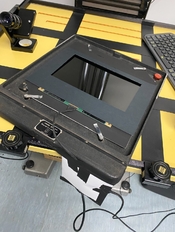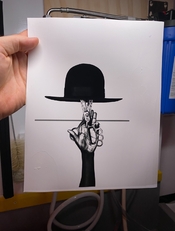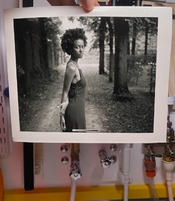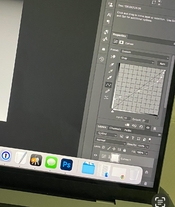That's one approach. The other is to take the full contrast range of the LCD as a starting point and select the contrast grade/filter that will give you a fill-scale print. Then use the curve to linearize the result. The advantage of this way is that it's less likely to result in posterization.
I want to try to fit it to a bare bulb because my exposure time is already 125s for an 8x10, putting on a 0-3 filter will blow that out to over 200s, more for a 4/5.
I think I have a pretty good curve now, once I determined an exposure for black, I eyeballed 21step wedge prints and adjusted the curve to get good separation.
I might do some fine adjustment at the top end of the highlights, or tweak the exposure a 1/12 of a stop. My test prints are coming out very nicely, will check once they dry.
This is the final curve shape - I ended up close to linear in the midtones/highlights to get better separation. iPhone screen grab of test print, way better than before














